Australia, November 2009
Among the biological highlights of Shark Bay World Heritage Area are the Hamelin Pool stromatolites, which are structures formed by cyanobacteria, the most ancient known lineage of life on earth. The previous time Monica and I visited this area, we found a nice Ctenophorus nuchalis (Central Netted Dragon) at the base of the boardwalk from which everyone takes pictures of the stromatolites. Alas, no herps were to be seen this time.
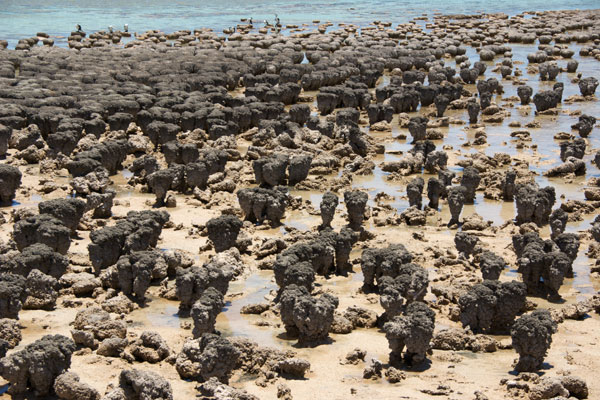
We stayed for four nights in the Monkey Mia resort near the tip of Peron Peninsula. After we crossed the peninsula from Denham on the ocean side, this wandering emu emphasized that we were nearing our destination on the bay side.
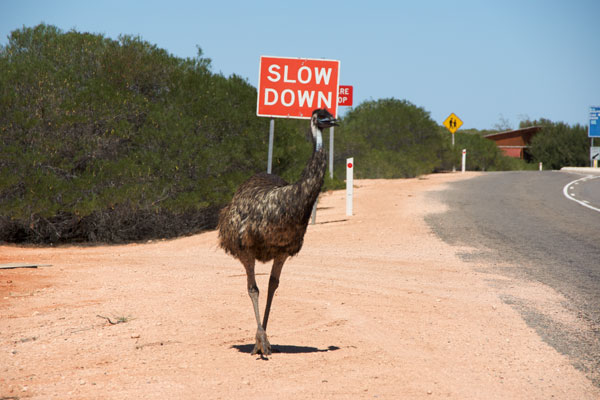
Monkey Mia is famous for a group of habituated dolphins that show up every morning to be fed by rangers and photographed by dozens of tourists. The dolphins have been doing this for decades; they started hanging out because local fisherman would give them leftovers, and have optimistically continued ever since, though nowadays only a few specific dolphins are fed, under the supervision of the Department of Conservation and Land Management. The dolphins are classified as Tursiops aduncus (Indo-Pacific Bottlenose Dolphins), though there is some taxonomic murkiness involved.
If you head out to the beach early in the morning, you can often see groups of dolphins patrolling back and forth, playing and gobbling down some shallow-water fish.
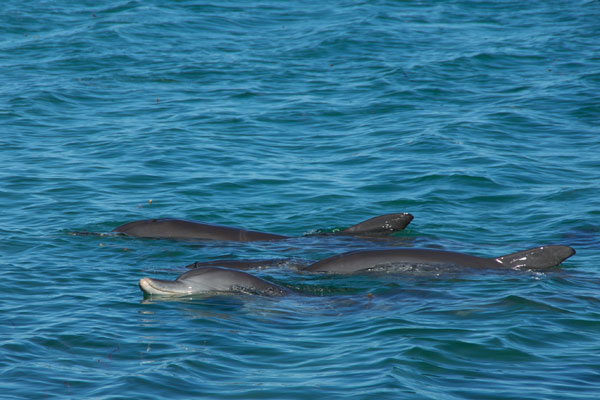
Soon everyone staying at the resort (and a whole lot of people not staying at the resort who have been bused in) wanders down to the beach and into the edge of the water. The dolphins that are due to be fed move in close and just hang out, waiting for their hand-fed breakfast.
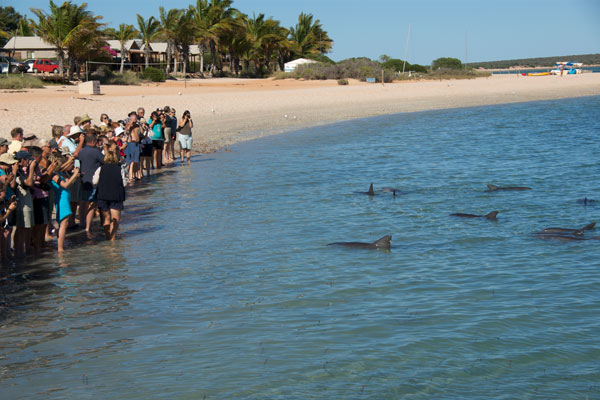
The local pelicans long ago figured out that fish were being regularly distributed in this area, and they show up to mooch. Each morning, one of the rangers is tasked with the duty of distracting the pelicans during dolphin feeding time so that they won’t bite the tourists while trying to snatch the fish intended for the dolphins. These are Pelecanus conspicillatus (Australian Pelicans).
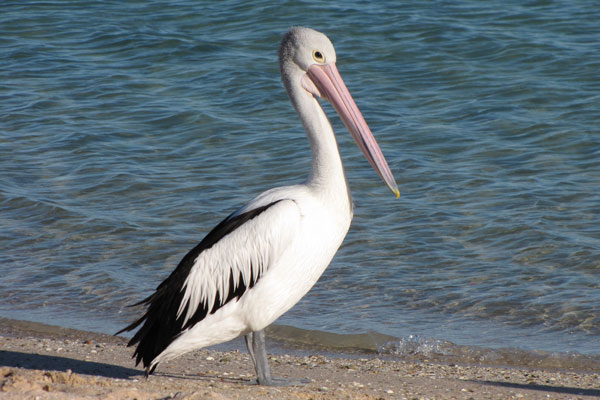
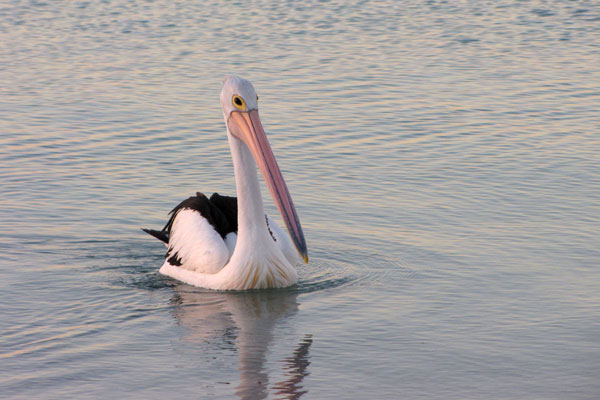
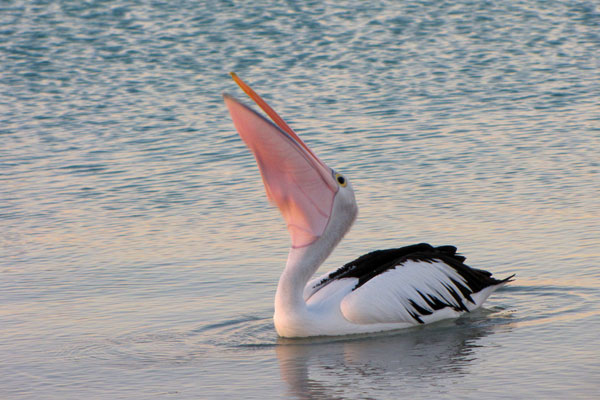
One morning a less aquatic avian visitor came by to check what the fuss was all about.
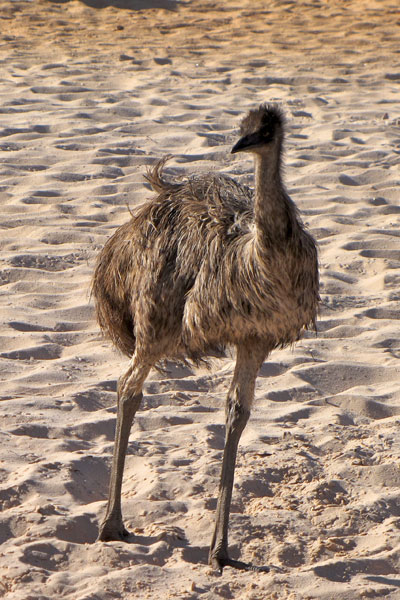
The main reason we returned specifically to Monkey Mia was to try to get some more looks at Dugong dugon (Dugongs), the eastern hemisphere counterpart to our manatees. On our previous trip to this area, we had seen three or four dungongs briefly from a boat, and another three or four from a viewpoint on a high promontory. This time we hit the dugong jackpot, and saw around twenty individuals on each of two boat trips. Shark Bay has either the largest or 2nd-largest population of dugongs in the world, depending upon whom you believe, but it is certainly the best place to see them if you come at just the right time of the year, which we had.
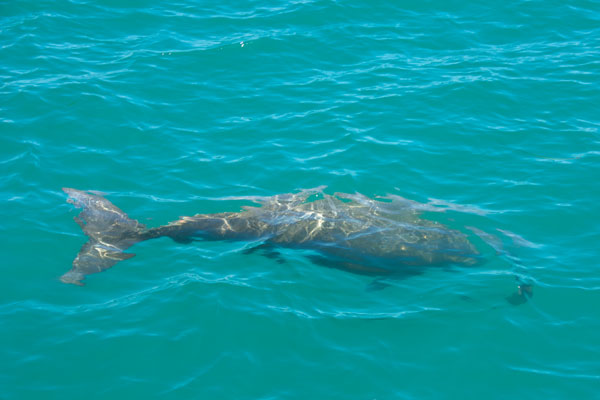
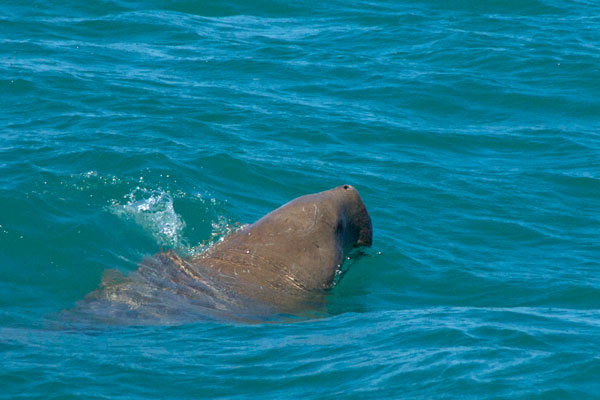
We also saw Chelonia mydas (Green Sea Turtles) and Caretta caretta (Loggerhead Sea Turtles) out near the dugongs, but too far away for us to get any worthwhile photos. Shark Bay also has several species of sea snake, but we weren’t lucky enough to see any of them. Here we are enjoying the ride.
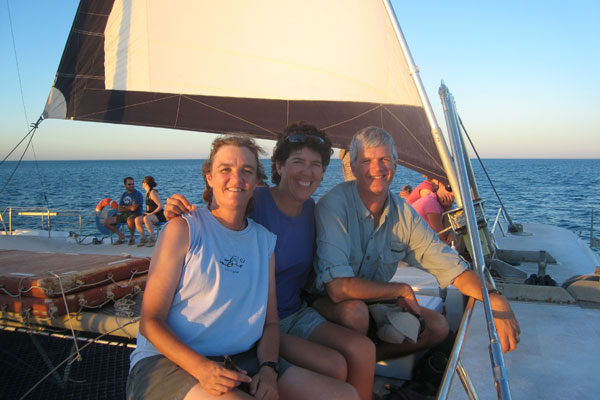
Many of the west coast beaches are remarkably uncrowded, including this one in Shark Bay World Heritage Area.
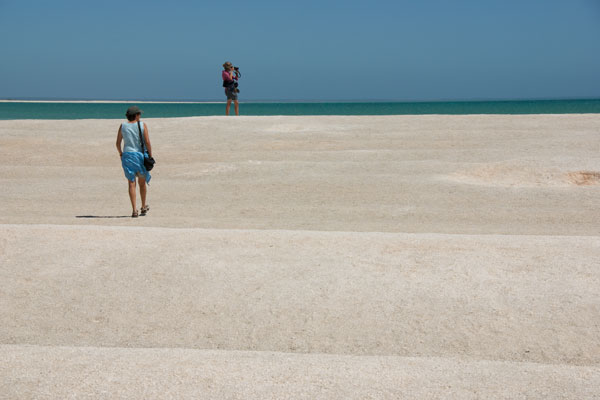
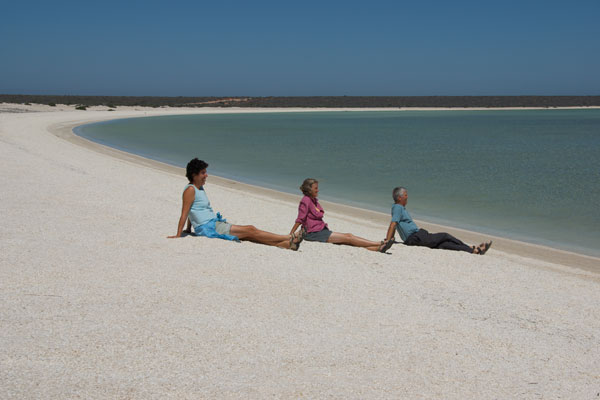
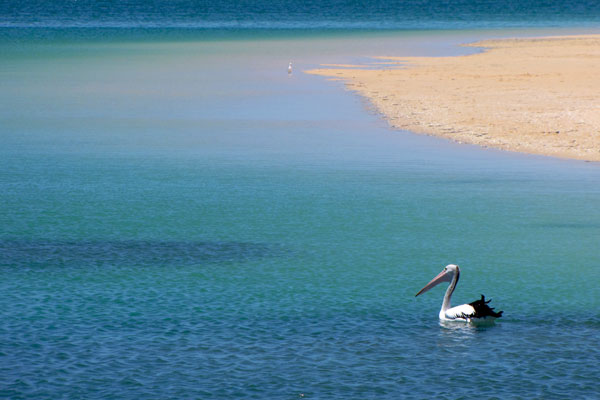
This particular beach is composed entirely of cockle shells, and is appropriately named Shell Beach.
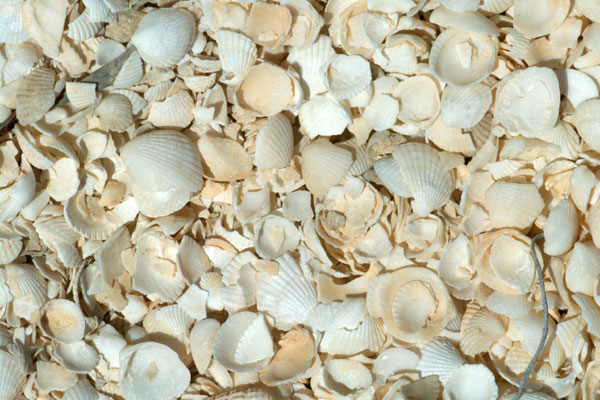
At the south end of Shell Beach is an electrified fence that cuts across Peron Peninsula at its narrowest point. This fence is part of Project Eden, which is an ambitious effort to eliminate invasive animals from the peninsula, in particular foxes and cats. There are still a lot of feral cats, but Project Eden has eliminated nearly all of the foxes, which is an important step in preserving and even restoring native marsupial populations.
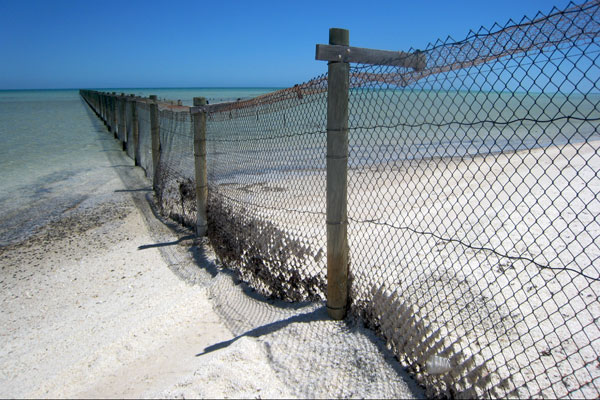
My personal goal in the Western Australia portion of our trip was to find the elusive Moloch horridus (Thorny Devil). On our previous visit I had found two dead devils, but none alive. Here I am setting off on a hiking trail across the road from Monkey Mia heading into prime devil habitat.
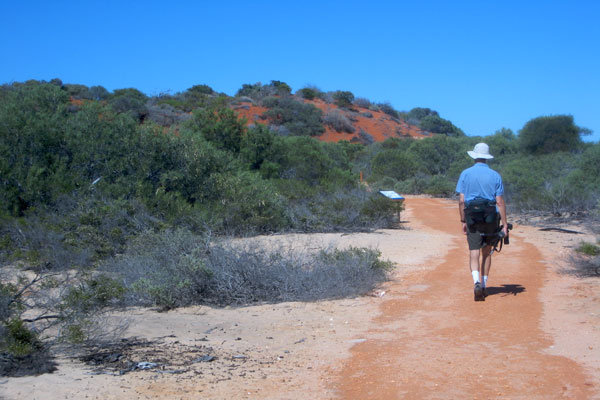
The ground in this area was criss-crossed with lizard tracks, including most obviously those of Varanus gouldii. But the only reptilian denizens to put in an appearance were these Ctenophorus maculatus maculatus (Spotted Military Dragons).
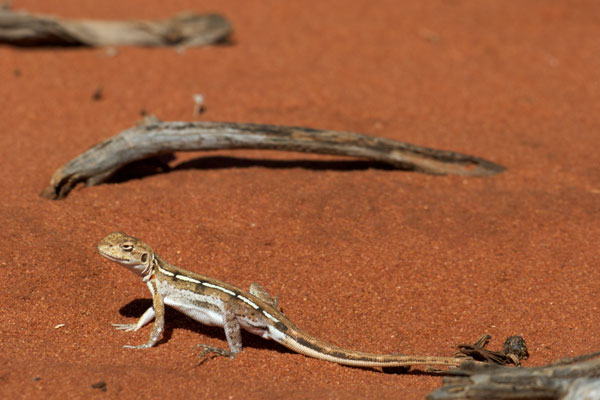
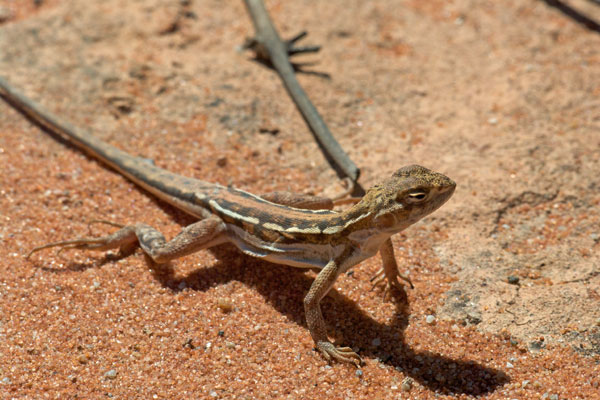
On a couple of nights Mary and I cruised the road that cuts across the peninsula from Monkey Mia to Denham. It was not very productive for herps; mostly we saw rabbits. But it wasn’t entirely herp-free, and I ended up seeing a couple of species that I had not seen on my previous visit.
Both nights started off with Heteronotia binoei (Bynoe’s Gecko). This is one of the most abundant and widespread herps in Australia, though it is probably a complex of species that have yet to be differentiated. Some populations are parthenogenetic, while others make baby geckos the standard way. I had seen these geckos in various places on previous trips, but only by uncovering them during the day. This had led me to the false conclusion that they were diurnal, so I was surprised to see them on the road at night.
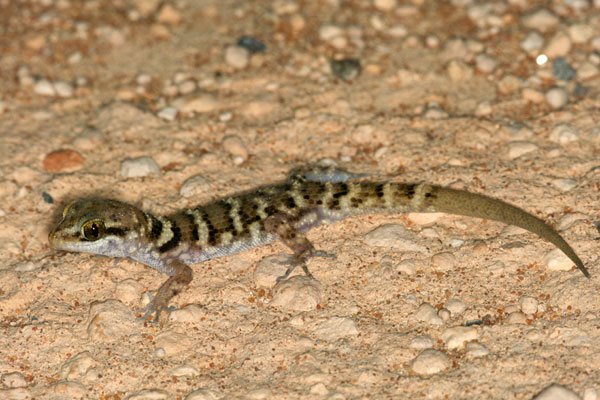
Surprisingly, the only other gecko species we encountered at night was Strophurus strophurus (Western Spiny-tailed Gecko). They look very similar to some other Strophurus species that I had seen on previous Australia trips, but I hadn’t seen this species before. One distinguishing characteristic of S. strophurus is the series of narrow bands of pale connective tissue on the tail, which is (barely) visible in the first photo here.
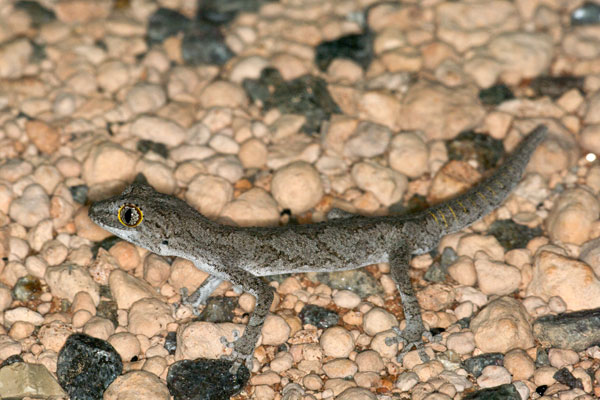
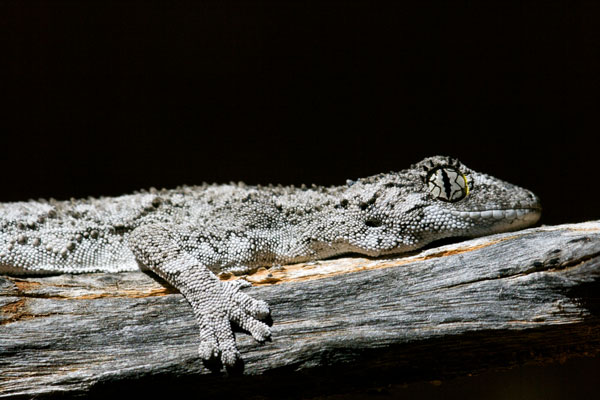
Other than the two types of geckos, the only herps we found on the roads at night were three beautiful little elapids in the genus Simoselaps. There are two species recognized in this area, S. bertholdi (Jan’s Banded Snake) and S. littoralis (West Coast Banded Snake). I thought that the three I photographed were all S. bertholdi, but David Fischer convinced me that the first, yellower, snake is actually S. littoralis. One of my recent field guides (Bush, Maryan, Browne-Cooper, and Robinson) says the following of S. littoralis: “Snakes assigned to this species from the Shark Bay area with orange rather than yellow bands require further investigation and may represent another undescribed form.” So maybe one or all of these snakes will end up being some new species. One of the joys of herping in Australia is that new species are still being discovered quite frequently.
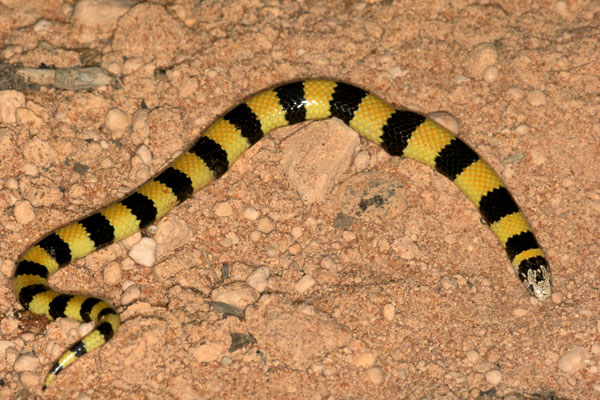
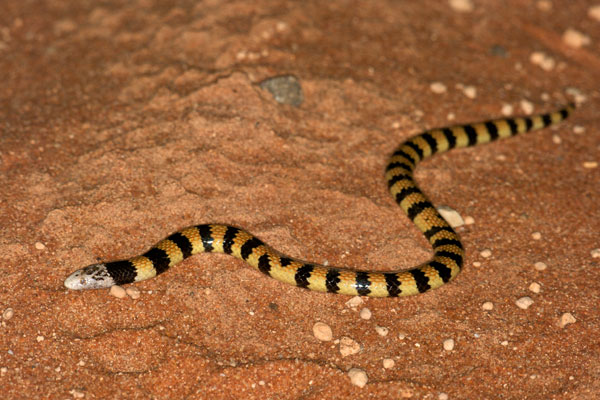
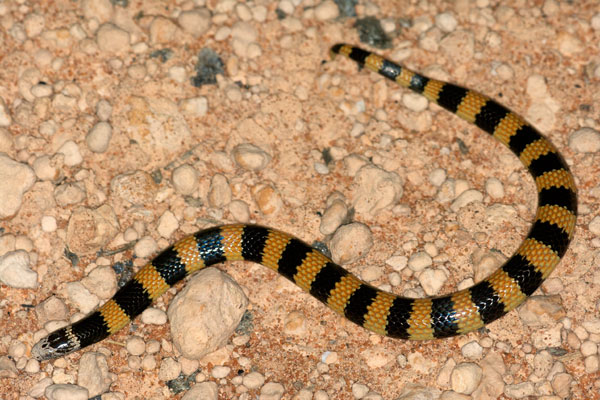
The three Simoselaps were the only snakes I managed to photograph in Western Australia. We saw two other snakes that didn’t wait around to have their images recorded for posterity. They were probably both the same species. Each was about a meter long, glossy black, seen during the day, proportioned approximately like a kingsnake, and fast as hell. I asked the guide on one of our boat trips if he knew what snake that might have been and he quickly and confidently assured me that they were Red-bellied Black Snakes. Realizing that Red-bellied Black Snakes live only on the other side of the continent, I stopped asking him questions about snakes. My best guess is that they were Pseudonaja nuchalis (Western Brown Snakes or Gwardars), though I have yet to find evidence that this species comes in a glossy black. Confirmations of this guess, or better guesses, are strongly encouraged.
We drove slowly across the Denham-Monkey Mia road and onto side tracks at various times of day in search of my thorny devil quarry. Following are some of the non-devil animals that we found this way.
A Tiliqua rugosa palarra (Shark Bay Shingleback).
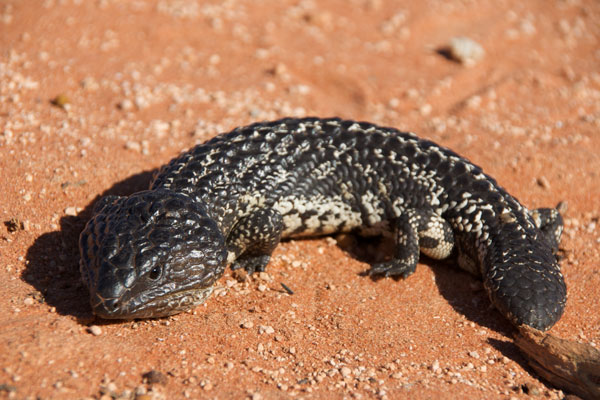
A Pogona minor minor (Western Bearded Dragon or Dwarf Bearded Dragon). This one was taking in some late-afternoon sun and let me approach very closely.
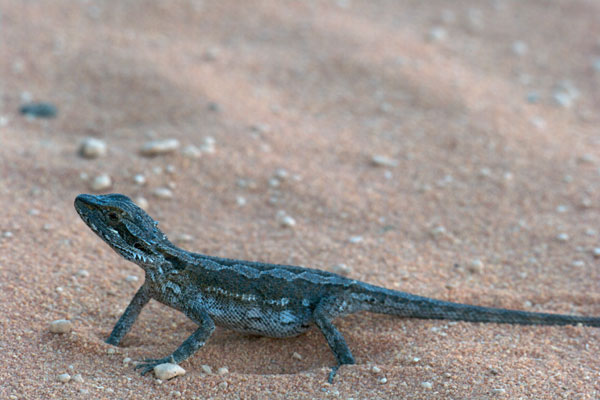
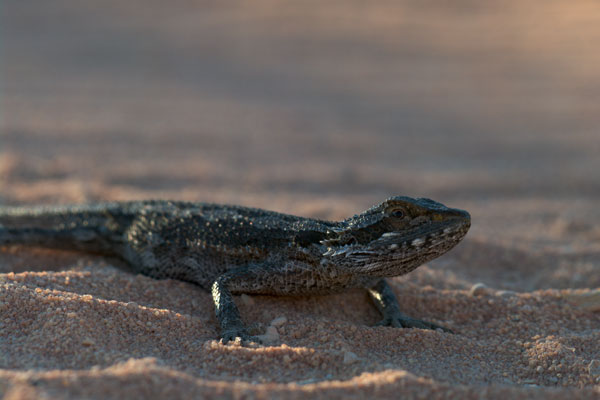
A Ctenophorus scutulatus (Lozenge-marked Bicycle-dragon). I hereby apologize for any disparaging words I might have uttered in the past about uninspiring common English names for Australian lizards, such as “Scute-snouted Calyptotis”.
This picture was taken from our car window, because my past experience with this species had led me to expect a quick retreat once the animal felt threatened. Sure enough, after taking this photo, I slowly opened the car door and the dragon bicycled away at once.
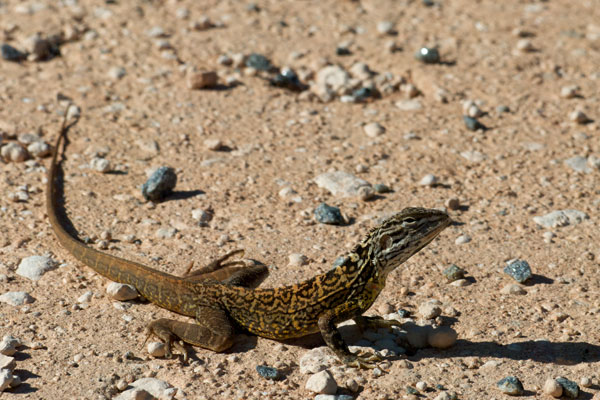
A Varanus gouldii (Gould’s Monitor). At least, I think it is that species rather than Varanus panoptes; I am not good at distinguishing those two species. We saw several of these from the car, but none that chose to stick around when I approached on foot.
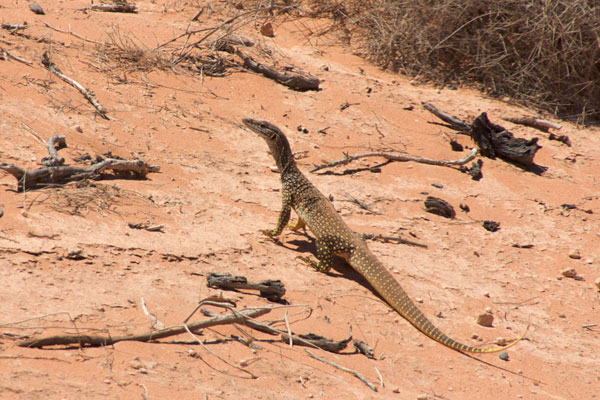
Another V. gouldii (I think), thinking about emerging from its burrow for a busy day of evading tourist cameras.
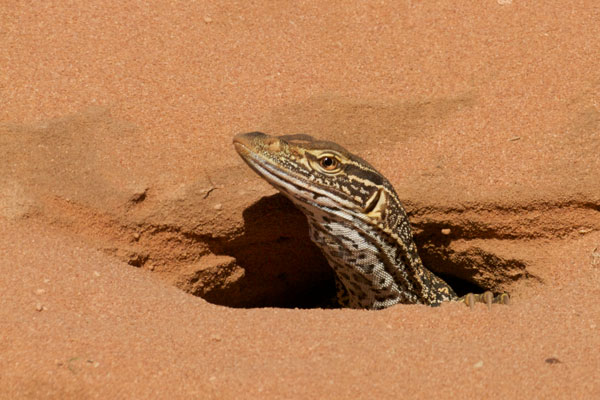
Mary spotted this strange little skink moving across some hard-packed sand along the road’s edge. This is one of the sand-burrowing Lerista skinks, which are rarely seen in the open (they are usually burrowed under the sand, duh). This one had no forelimbs and two toes on its hindlimbs. I believe it is Lerista varia (Shark Bay Broad-blazed Slider), but I’m not very confident because it looks significantly thinner than the L. varia I’ve seen in photographs.
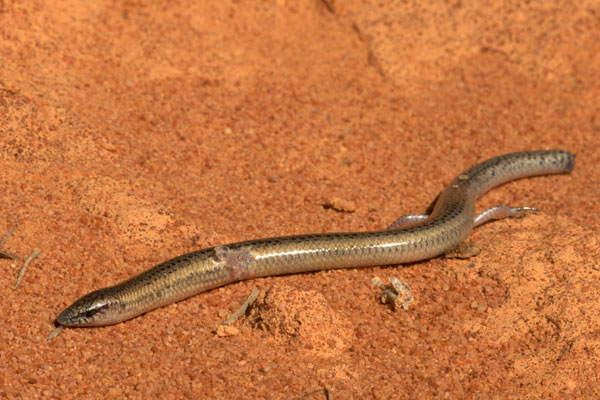
Speaking of strange little animals, this was probably the oddest creature we saw on our trip. It was about two inches long and covered with tiny bits of wood. It was pulling itself along the sand by wriggling its relatively flexible front end. I assume it is the larval form of some kind of flying insect, a la the caddisfly. But I haven’t been able to ferret out its identity.
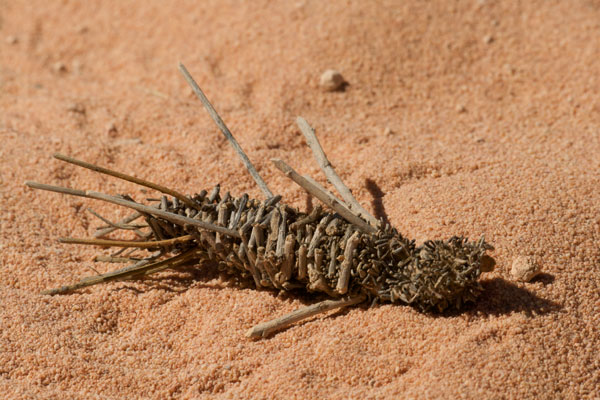
Other than Varanus gouldii, the only other herp species that I saw both on the west coast and on the Top End was the widespread Gehyra variegata (Variegated Dtella or Tree Dtella; now I feel like complaining about the common English names again). This one was active by day on a huge bag of wool inside the old sheep station at Peron Homestead.
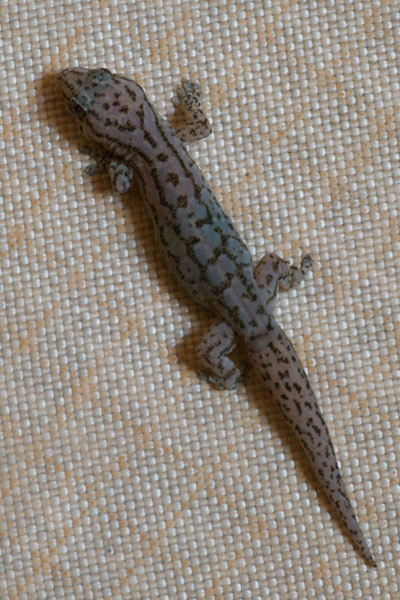
This Tiliqua occipitalis (Western Blue-tongued Skink) was perhaps the most attractive and the silliest lizard we saw on the west coast. It was considering a suicidal meander across World Heritage Drive when I interrupted its plans for some photos. Its first line of defense was to look extremely flat. Its second line of defense was to show off its terrifying tongue.
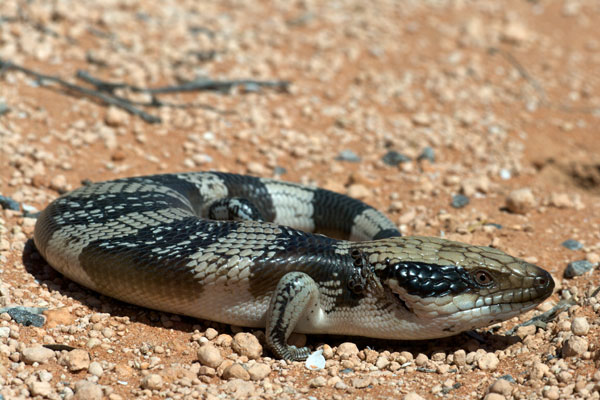
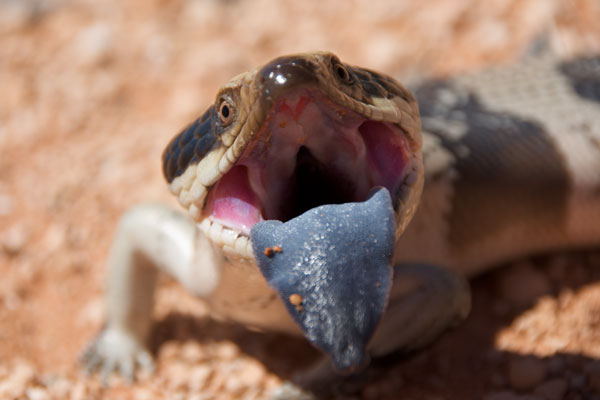
We saw most of these animals while scouring the roadsides for thorny devils. After the first couple of days with no success, I tried to boost our chances by purchasing a small plastic thorny devil and carrying it everywhere for good luck. Once I put it out on the sand near some ants, hoping that the real thorny devils would become jealous and rush over to eat the juiciest ants first.
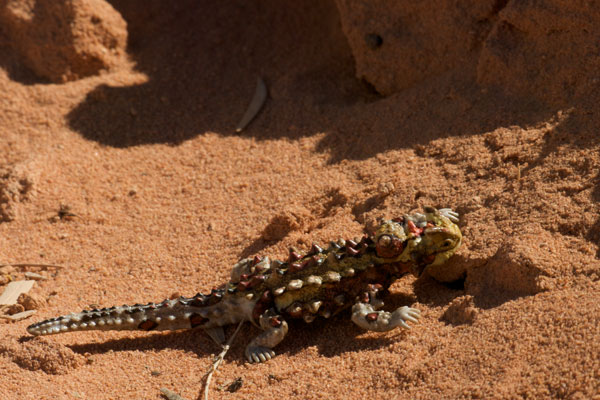
But alas, the only larger non-plastic thorny devil we saw on this trip was an attractive one made of tile on the traffic circle at the north end of Denham.
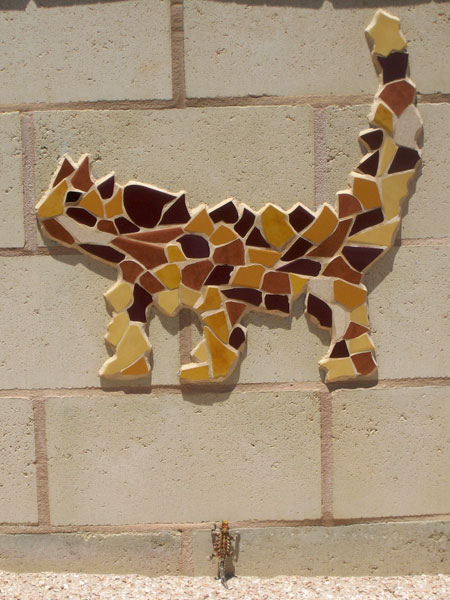
So, tragically, my quest for Moloch horridus did not end on this trip. I guess that means I’ll have to visit Australia again soon and give it another shot. Mmmm, sounds fun!
John Sullivan
January, 2010